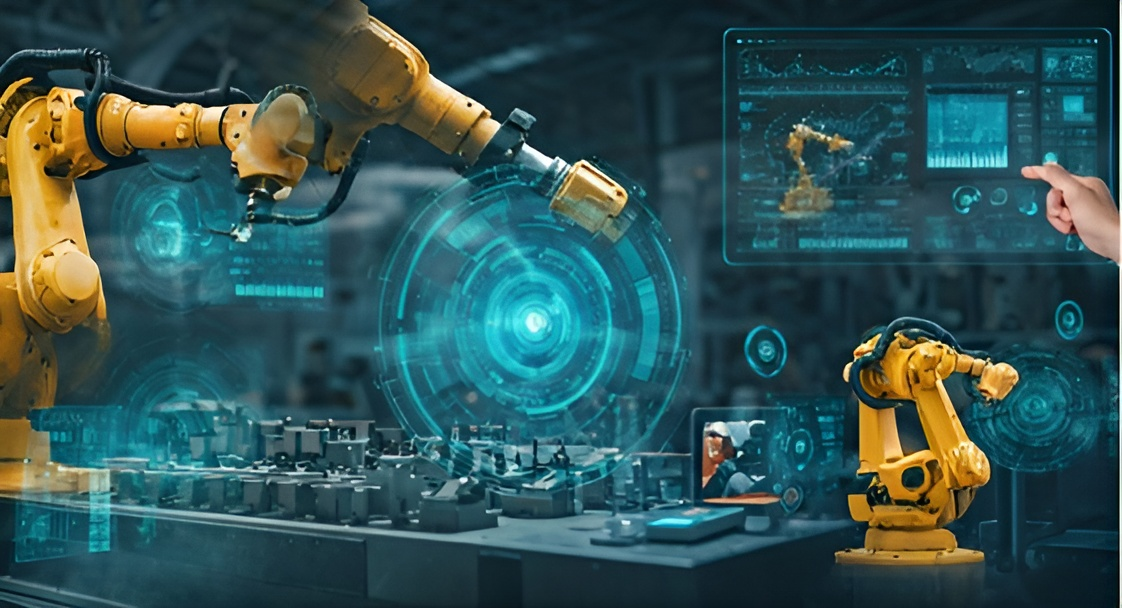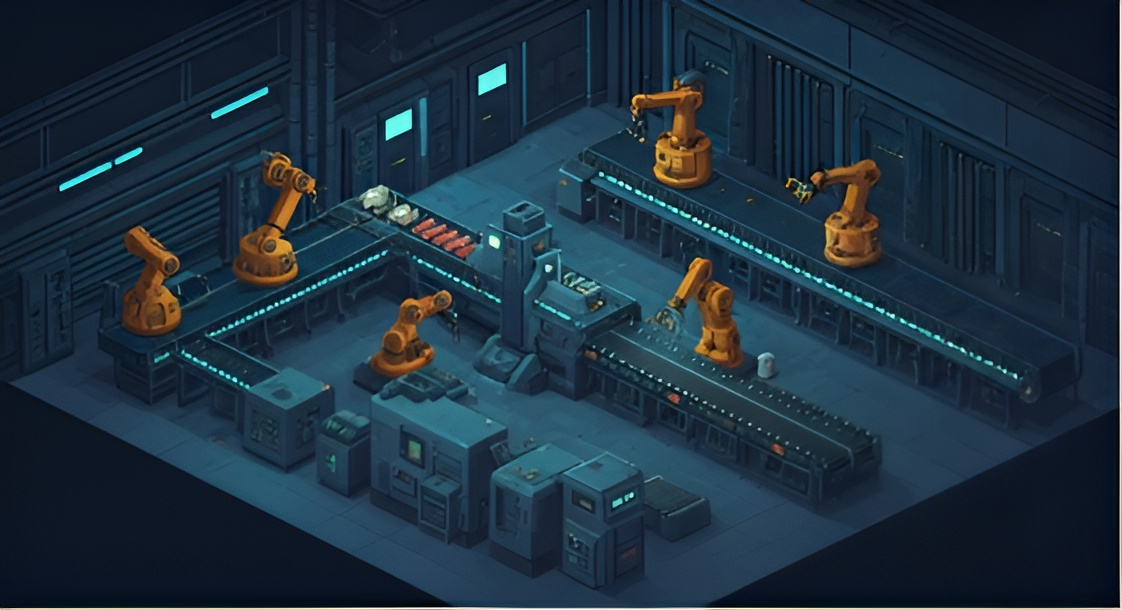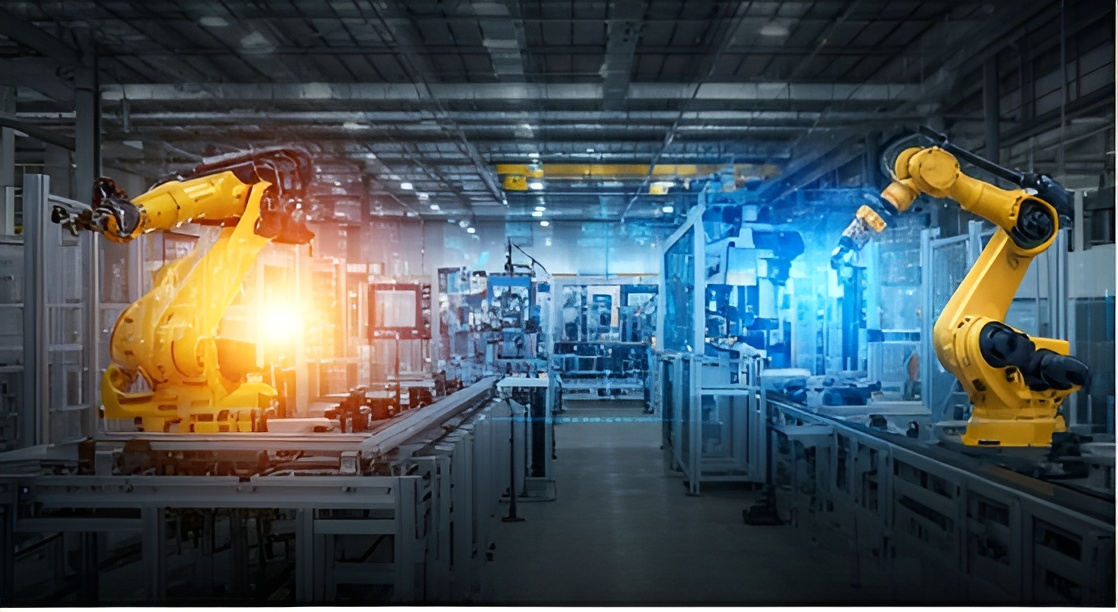Revolutionizing Industry: The Rise of Automatic Production
Revolutionizing Industry: The Rise of Automatic Production
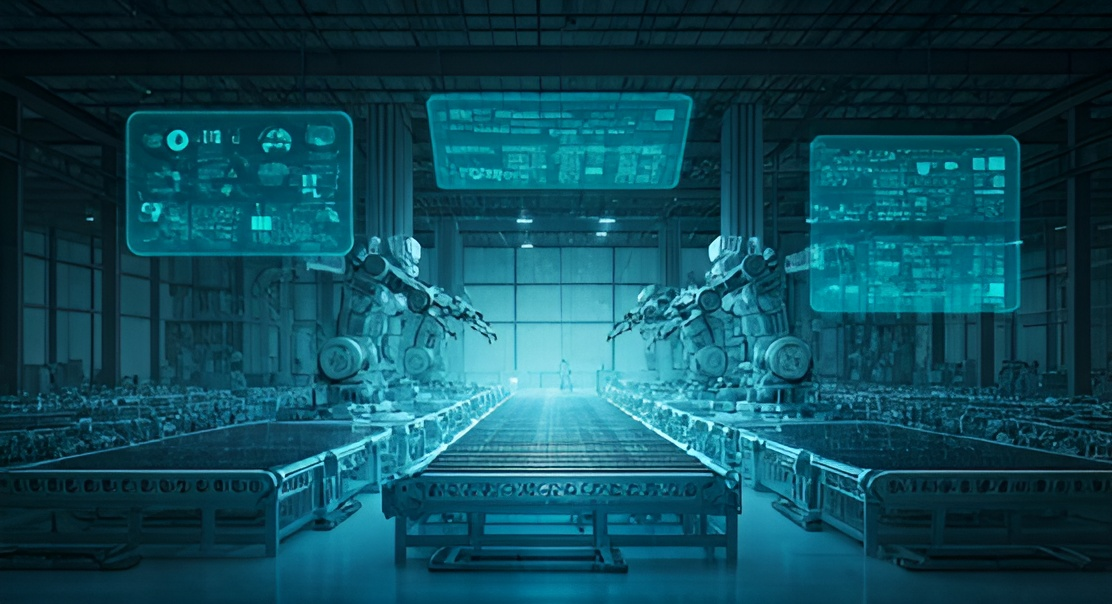
Key Highlights
- Automatic production lines minimize human intervention, improving operational efficiency and reducing labor costs.
- Key technologies such as robotics, artificial intelligence (AI), and the Internet of Things (IoT) drive innovation in modern manufacturing.
- Automation boosts product quality and consistency, minimizing human errors while enhancing precision.
- Flexibility in production lines allows rapid shifts between different product demands, ensuring a competitive edge.
- Challenges like workforce transition, high implementation costs, and integration complexities need careful planning to ensure success.
- Industry 4.0 principles underpin the shift to smarter, data-driven, and efficient production systems.
Introduction
Automatic production is changing the way we make things. It helps companies work faster and better. By cutting down on human intervention and using smart machines, factories can reach new levels of precision and product quality. Robotics, advanced algorithms, and the internet of things are at the heart of this big change. As customer needs grow and market conditions change, more companies turn to automatic production lines. This helps them keep a competitive advantage, boost their production capacity, and make sure their products are the best they can be.
Exploring the Future of Automatic Manufacturing
The Evolution of Automatic Production in Industry
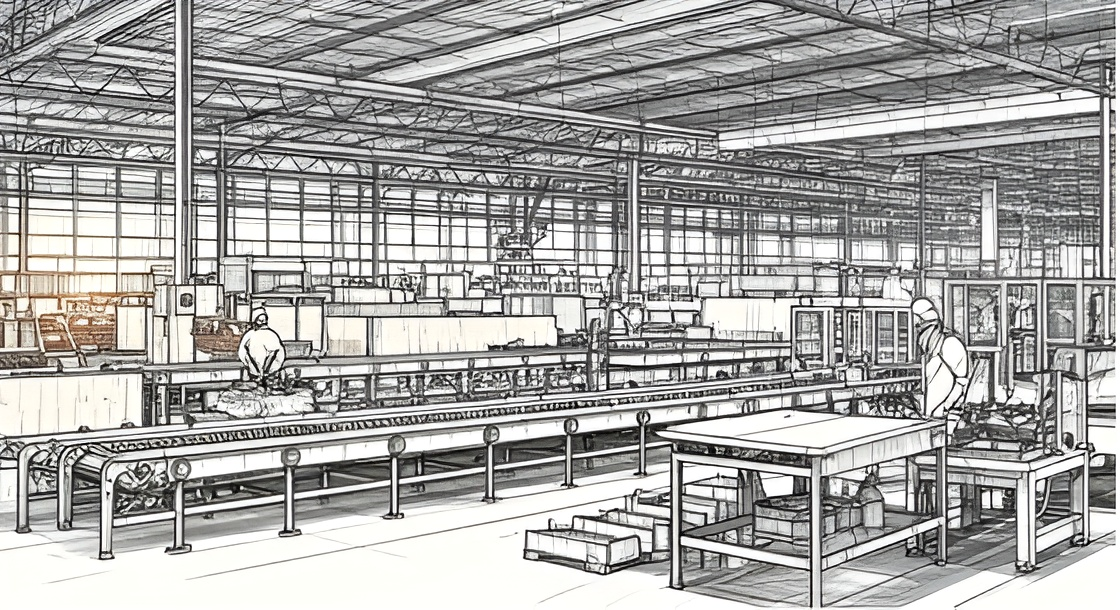
The story of automatic production in industry is about a big change. It moved from work done by hand to using machines. At first, there were simple machines and conveyor belts. These early ideas made it possible for bigger changes to happen later. When CNC and robotics came in, they made production lines better. There was now less need for human intervention, and things could be done with more precision.
This new kind of automation did a lot. It let factories boost their production capacity. Companies could now change what they made fast. They reacted better to the market conditions and what customer demand was at the time.
From Manual Labor to Mechanized Processes
The move from manual labor to machines was a big change for manufacturing. Automation brought in new machinery with sensors and controllers. This meant the production line could run well with much less human intervention. Because of this, labor costs went down. Companies could also make more products, and they could meet customer demand even when market conditions changed fast. When robots and CNC systems became common, manufacturers started to use algorithms to improve precision and make things more consistent. This use of automation and machinery changed the whole manufacturing process.
Key Milestones in Automation History
The path to automation has made big steps that changed how we make things. In the early 20th century, conveyor belts came in and made the manufacturing process much faster by cutting down on human intervention. Then, programmable logic controllers (PLCs) came along and helped make control systems that use more precision and work better. In recent years, there has been the integration of artificial intelligence and the internet of things. These let us monitor and improve work in real-time. So now, production capacity and product quality in many industries have reached new, higher standards thanks to automation.
Core Technologies Powering Automatic Production
The core of automatic production is in the use of robotics, machinery, and sensors. These tools help make the manufacturing process faster and better. With the help of algorithms, these systems can run more smoothly and need less human intervention. Artificial intelligence and machine learning look at data to help people make choices. This helps to boost production capacity and lets companies change plans if the market conditions shift. All together, these systems create a control system that brings more precision, helps cut down human errors, and gives better product quality.
Robotics and Intelligent Machinery
The use of robotics and smart machinery has changed the way automatic production works. These systems have sensors and algorithms that help to make the manufacturing process better by adding more precision and efficiency. By bringing in robotics, there is less need for human intervention in the work. This helps reduce human errors and brings down labor costs. With these tools in place, companies can grow their production capacity and keep product quality at a good level. This change not only makes workflows smoother but also gives industries a strong competitive advantage in the market as things keep changing.
The Role of Artificial Intelligence and Machine Learning
Artificial intelligence and machine learning are now a big part of making automatic production systems better. These technologies use smart algorithms to study data right away. This helps make work in factories smoother and cuts down on how much human intervention is needed. With the help of AI-driven analytics, companies can fix problems before they get worse, which lowers the time their machines are down. Machine learning models also change as market conditions and customer demand shift. This helps all of us work better over time. This use of AI makes production capacity go up and products turn out better. It also gives companies a strong competitive advantage in today's fast-moving world.
Designing Modern Automated Production Lines
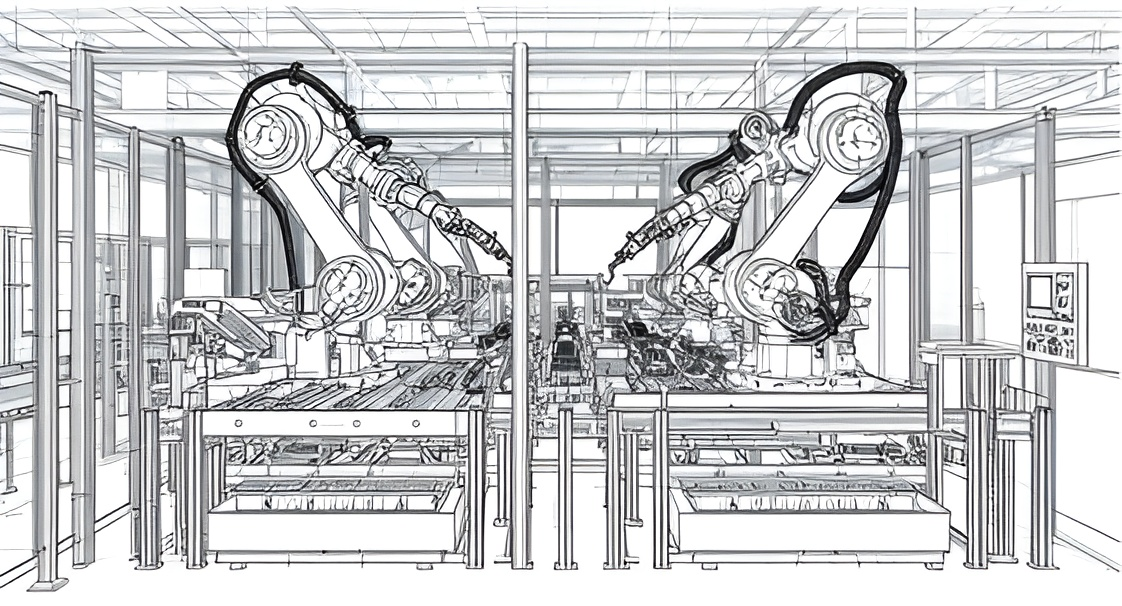
To build an efficient automated production line, you need to think about what parts to use and how to set them up. When you use robotics, sensors, and control systems, the production line works better, and there are fewer human errors. If the conveyor belts are placed in the right way and you use good algorithms, you can make the manufacturing process run smoother. This setup helps you meet customer demand and adjust to changes in market conditions. When all these pieces work together, it gives the business a great competitive advantage by building strong production capacity.
Essential Components and Layout Considerations
Efficient automatic production lines use important parts like conveyors, robotics, sensors, and PLCs. These all help to make the manufacturing process run better. The layout of the line should let materials move through it easily. This way, there is less need for human intervention, so there will be fewer mistakes. Precision is important when you pick and place each part. This makes sure the control systems all work well together.
It is also good to plan for new changes. The production line should be able to grow and change with market conditions. This approach helps you increase your production capacity. It makes sure your business keeps its competitive advantage and meets changing customer demand in a world with more automation.
Integrating Digital Monitoring and Control Systems
The use of digital monitoring and control systems plays a key role in how automatic production lines change over time. When manufacturers add advanced sensors and PLCs to their machinery, they get real-time control over how things work. This helps them run the manufacturing process better and have less need for human intervention.
Because of this, they use fewer people on the floor and there are fewer human errors. The result is that product quality stays high. When they use smart algorithms, the system can change and adjust itself. This is helpful to keep the right production capacity at all times, even if customer demand or market conditions go up or down. All these things help people and companies get the most out of their work.
Benefits of Automatic Production for U.S. Industries
Automatic production gives many big benefits to U.S. industries. It lets companies get more work done and do it faster. By using smart machines and strong control systems, businesses can make their production line work better. They can also boost their production capacity. At the same time, they spend less on labor costs and fix more human errors.
Adding in artificial intelligence and robotics helps keep product quality steady. It also means products match what customer demand and keep up with market conditions even when things change. Working with sensors and algorithms in an automatic production line makes things run more smoothly. This gives a strong competitive advantage. You need this kind of edge in a changing environment where many other companies want to win too.
Boosting Efficiency and Productivity
Automatic production systems help make work faster and easier by cutting down on human intervention. This be done by using robotics, sensors, and smart machinery in the manufacturing process. These tools help companies get the most out of their production capacity and spend less on labor costs. Algorithms and control systems keep each step of the process precise, so there are fewer human errors and products are made faster. When you add the internet of things, you can keep an eye on production in real-time. This means companies can react quickly to changes in the market conditions and customer demand. The end result is a big boost in productivity.
Enhancing Product Quality and Consistency
By cutting down on human intervention, automatic production systems help boost product quality and make it more consistent. These systems use sensors, algorithms, and robotics to make sure each product meets high standards. This setup lowers the chance of human errors. The systems can watch the process as it happens and change things right away to keep everything running well. This level of precision helps increase production capacity. It also makes sure the output matches market conditions and customer demand. In the end, it gives great product quality and helps the company have a strong competitive advantage in the industry.
Challenges and Considerations in Adopting Automation
Adding automation in industries comes with several challenges to think about. One big problem is helping the workforce move to this new way of working. Companies need to help people learn new skills, so they can do jobs that involve advanced robotics. Human factors are also important. This means that businesses should find ways to manage worries about human intervention together with new robots. Another thing to watch is the cost. It is important to handle money spent on new technology and take care when putting new systems in place. These parts matter because they help companies keep their competitive advantage, adjust to changing market conditions, and still have good product quality and enough production capacity.
Workforce Transition and Skills Development
As more businesses use automatic production lines, traditional ways of making things change. Because of this, the shift for the workforce is very important. Workers need to learn the skills to work with new machinery, like robotics and AI systems. Learning these skills helps people stay up to date and do well with automation. Good training programs can help everyone get the skills needed, and they keep people interested in these new technologies, too.
It is also important to think about human factors when designing automation. This helps humans and machines work well together. When this happens, companies have a better chance of getting a competitive advantage. Doing all this the right way helps the whole team move smoothly into the new way of working. In the end, it makes for better productivity and helps people keep up with changes in market conditions.
Managing Costs and Implementation Risks
Effective management of costs and risks is key for good automation. You have to look at how much money you put in first and what you will save later from better work and less labor costs. It is also important to check for risks, like possible human errors or when machinery or robotics may fail. When using new robots or automation, letting good risk checks guide you can help.
Using your production capacity well and thinking about market conditions are both needed. They help you put your money and time in the right places, making sure things do not stop without a reason. Being ready, making a good budget, and giving enough training to people can help you use machinery and automation in the best way for your work in manufacturing.
Conclusion
To sum up, automatic production is changing many industries. It helps increase efficiency, raise production capacity, and make product quality better by using more precision and advanced algorithms. When businesses use robotics, AI, and other new tools, they get a big competitive advantage. These things help companies meet customer demand and make their manufacturing smoother. But, they also need to handle challenges, like how to help their workers adapt and how to manage costs. Moving forward with these changes will shape the future of production and affect the economy.
Frequently Asked Questions
What industries benefit most from automatic production?
Industries like automotive, electronics, and pharmaceuticals see big gains from using automation in their work. These fields use automatic systems to make things more efficient. It helps them cut down on mistakes and keep their products the same every time. This also lets them make more items and save money during the manufacturing process.
How does automation affect employment opportunities?
Automation is changing the way people work. It moves the focus from simple manual jobs to ones that need more advanced technical skills. Some old jobs may go away, but automation also brings new roles. Now, there are more openings for people in areas like handling, fixing, and programming automation systems. Because of this, workers need to learn new skills and train for these jobs. This shift means the workforce needs to keep up with changes in technology.
Are automated production lines adaptable to different products?
Yes, automated production lines can be good at handling different products. This is because they use modular designs and flexible machinery. With this setup, manufacturers can quickly switch from making one type of product to another. It helps in making the production more versatile and keeps up with changes in the market. Also, there is no need for a lot of downtime or high costs to make these changes.
What are the main barriers to adopting automation in the U.S.?
The main barriers to using automation in the U.S. are high starting costs, people not wanting change because they do not have the right skills, and worries about losing jobs. Also, it can be hard for companies to fit new technology into the systems they already use. They must do this while also following the rules set by the government.
How is data security managed in automated production systems?
Data security in automated production systems is kept safe with strong encryption, tight access controls, and non-stop monitoring. Adding cybersecurity steps and checking systems often helps to keep important data safe from any leaks. This is how companies make sure their automated work stays honest and runs well.

